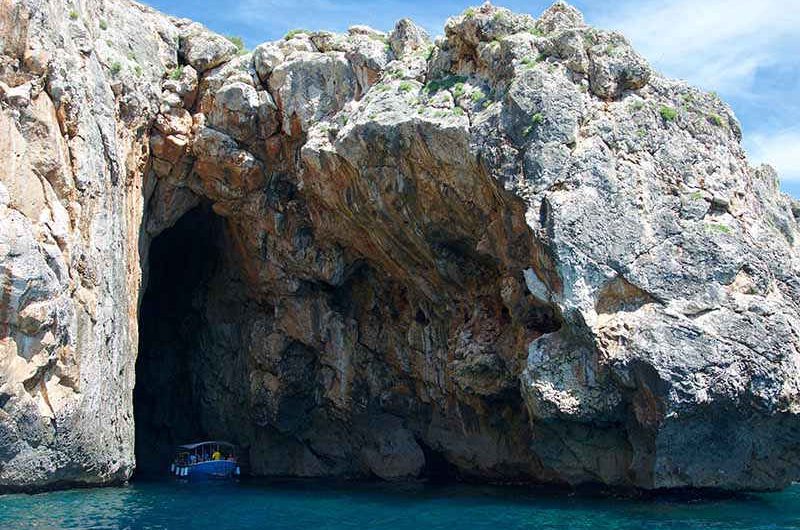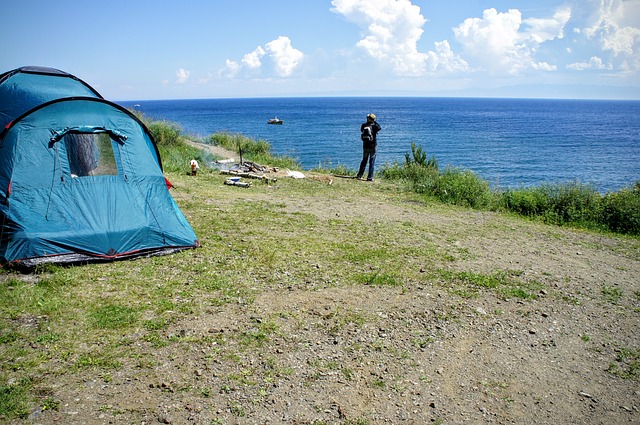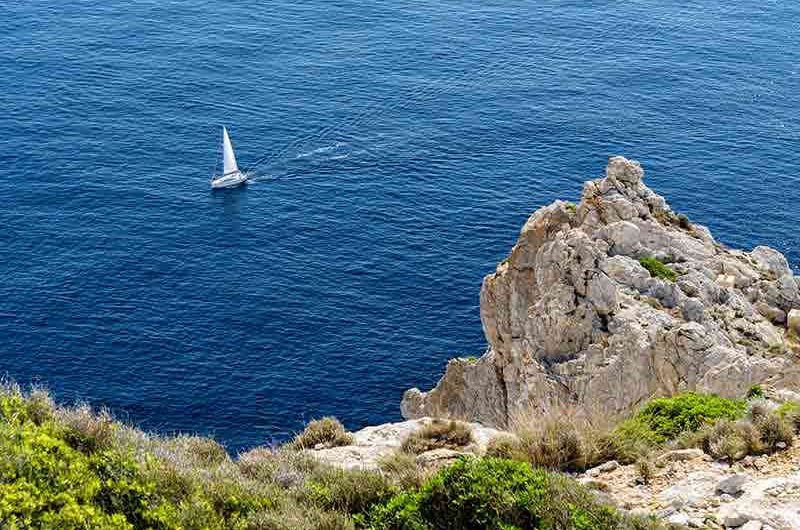The Capo di Leuca area is a strip of land that stretches between the Adriatic Sea and the Ionian Sea. There are many locations that overlook the sea and which include the traits of the Salento Coast. The karst nature of the land over the centuries has led to the creation of many caves and coves close to the rocky shores of Salento; within them they are often precious prehistoric relics that tell the origins of Leuca ground and pass important information about the earliest hominids were using attend the caves. The sea of Santa Maria di Leuca is undoubtedly the most generous place of these wonders of Salento: here, on the extreme tip of Italy to the endless shades of blue of the Ionian and Adriatic, are some of the most beautiful caves of the whole peninsula, rocky cliffs overlooking the sea of incomparable forms and colors that have helped to make this part of the Cape of Leuca tourist destination with unique charm. The route starts from Cazzafri Caves, the first visited leaving the port of Santa Maria di Leuca right under the monumental staircase leading to the shrine. These are two deep cavities over 20 meters who join the fund whose rocks present a varied coloration which tends to blue especially during sunset. It then moves on to the Grotta di Terrarico Bouches, located near the tip of the promontory Terrarico and characterized by the presence of numerous stalactites and stalagmites, and the Grotta del Pozzo, also known as the Great Cave of the Ciolo. Through the Blue Cave, the Cave of Cipolliane, the Matron Cave and the Cave of Prazziche you end the route by boat to Leuca stopping at the Grotta del Drago whose shape, with the complicity of the play of light and shadow,
The Capo di Leuca area is a strip of land that stretches between the Adriatic Sea and the Ionian Sea. There are many locations that overlook the sea and which
The Salento area is characterized by the strong presence of nature, from the sea to the limestone rocks, the woods to the Mediterranean in Salento everything is nature. Infinite possibilities of green routes in this beautiful land: hiking in the countryside, walks in the woods of oak and holm oak, cycling routes in the Mediterranean lined paths, etc. In addition, many of the coastal areas of the Capo di Leuca (Tricase, Castrignano del Capo Gagliano del Capo, Tiggiano, etc.) Within the Costa Park Otranto - Santa Maria di Leuca and Tricase Forest, established by the Puglia Region in order to safeguard the coast East of Salento, rich in precious architectural monuments and important species of animals and plants. Near the villa, the Grotta Azzurra Path contains the name of all its beauty. Departing from Alessano, it spreads over a distance of 500 meters and a vertical drop of 4 meters which makes it affordable for everyone and all. The Blue Cave is breathtaking for the many shades of blue that characterize it; the simple path becomes even more valuable because it leads to the Path of Ciolo, whose name is not new to fans of Salento and breathtaking dives (from the bridge of Ciolo, in fact). The trail starts from the Ciolo Gagliano del Capo. After the chapel dedicated to the Madonna di Leuca, the first of many dedicated to the Virgin protector of the area, there are places on the cattle track of Ciolo. It 'exciting even for the most inexperienced observe the erosion that wind, sun and rain have produced the imposing rocky ridges. By the Ciolo, then, you meet the path of Cipolliane that in about an hour, leading to the Old Port of Novaglie, along the way offering numerous historical and natural cues. Finally, the municipality
The Salento area is characterized by the strong presence of nature, from the sea to the limestone rocks, the woods to the Mediterranean in Salento everything is nature. Infinite possibilities
The ancient Vie del Sale is a little known but absolutely fascinating path that winds in the maritime zones in the vicinity of Corsano. Corsano is one of the countries that has preserved the best part of his rock and landscape heritage, which includes the old "sheep tracks", ie the rural paths characterized by the typical dry stone walls that meander in the peculiar nature of Salento from the outskirts of Corsano up at the sea. The oldest is the tratturo Nsepe from which they were built, from the end of the first half of the eighteenth century, the side streets that are named Munterune, Scalapreola and Scalamunte. Le Vie del Sale take their name from their function, which is to guide the workers who in the past gathered salt from special tanks carved into the cliff, which allowed the accumulation of sea water the subsequent drying, and carried him up to the hinterland. Today, you can admire these old trails that wind in a habitat still unchanged over time: starting from Corsano, the Salt Road is marked by a sign that guides the visitor through the trails to the sea. Wanting to do this excursion in the Regional Natural Park Costa Otranto, Santa Maria Leuca and Bosco Tricase, you must leave the resort Scalamasciu to Guardiola Marina, from where you continue on foot on a path of about three hours to reach Scala Preula , Munteruno, Rusia, Scala Munte and N'zepe-Bortoli.
The ancient Vie del Sale is a little known but absolutely fascinating path that winds in the maritime zones in the vicinity of Corsano. Corsano is one of the countries




